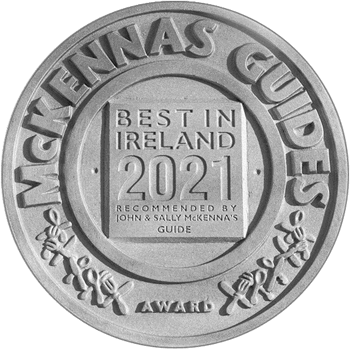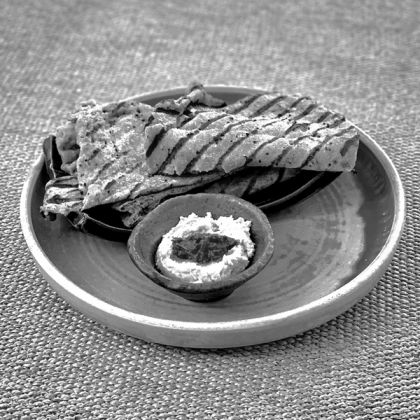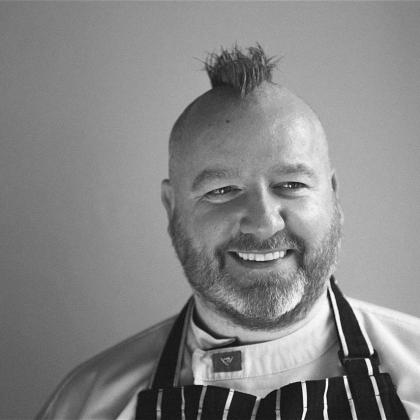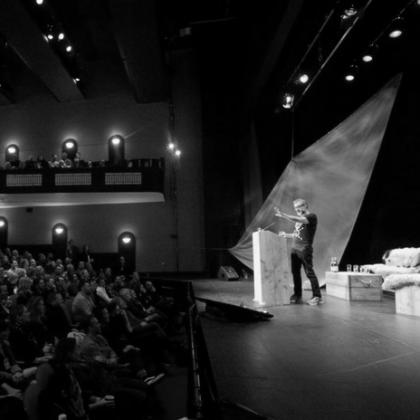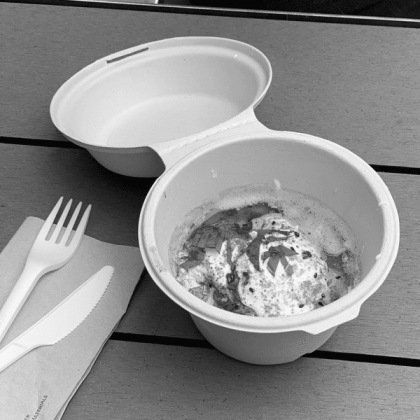25 Years of Cais: Speech at Cashel, November 2008
It is such a privilige to be asked to say something to mark 25 years of CAIS.
For almost 20 years of those 25 years, my wife and I have been writing about cheesemakers, writing about those who have succeeded, and who today enjoy what we might call luxury brand status, but also writing about others who endeavouerd but who, for a host of reasons, have not survived:
.
I can still recall Maam Valley Cheese being made on the stovetop in a farmhouse in Connemara, I remember in Kerry visiting “the bicycling Germans” with the Israeli recipe for soft goat’s cheese preserved in olive oil, and who lived in a house with a grass roof.
I remember St Martin cheese from County Clare made by Eileen O’Brien, and of course one members the amazing Martin Guillemot and Ann Marie Jamand of Maucnaclea Cheeses in Cork market. And who can forget Monica Murphy’s pioneering Cheeseboard shop, in Dublin, years ahead of its time.
Ireland’s farmhouse cheese economy stretches from those who are the veterans at this stage,those who created Cais back in 1983 – Gubbeen, Milleens, Durrus, Carrigbyrne, Glen-o-Sheen, Coolea, Ryefield – all the way to the newcomers like Knockdrinna, Mossfield, Glebe Brethan. Some cheese businesses are relatively large in scale, and some are tiny: one of the best West Cork goats milk cheeses – Carriag Goat’s Cheese – can be bought in only 2 wholefood shops in West Cork
I start from the point from at which, I believe, that you started: milk is a magic liquid.
It is the source of life, as Pierre Boissard notes in his history of Camembert, He writes: ”It is highly complex and recalcitrant substance”. Right from the baby’s first suckle to the pleasure of a mature piece of blue cheese or an oozing semi-soft washed rind cheese, enjoyed with a glass of wine, in our maturity, milk sustains us. As Peter Ward, one of the many great retail champions of cheesemaking, said in 2002: “Milk is in our blood!”
But if milk is a magic liquid, then it follows that cheesemakers, those who work closest of all with milk, those who understand it better than anyone else, those who understand that milk is a changeling, a shape-shifter – that milk is not just a living thing, but almost a living teenager thing – are not simply its handmaidens. They are much more, they are its Magicians.
Magic = genius with geography
What is magic? it is genius allied to geography. It is where and when the cheesemaker realises the cheese that wants to be made, and then seizes and adapts the milk and the micro flora, recognising the place that is at the heart of every cheese.
Myrtle Allen in her Ballymaloe Cookbook quotes a local buttermaker who, when told tht the quality ofbutter he was sending over was excellent, replied that: “the milk from that field always made good butter“.
Not the milk from the county, or the cow, but the milk from “that field”.
The great Italian writer Italo Calvino put it this way in his novel Mr Palomar:
“Behind every cheese there is a different pasture of a different green under a different sky”
The Person
Magic happens when Creativity collides with stubbornness: every cheese is different, not just because of Place, but because of the Person: taste the cheese and you meet the cheesemaker, for every cheese is the mirror of its maker. Meet Irish cheesemakers and you also meet people with that greatest human virtue: stubbornness. Bolshie people!
The Place meets the Person who can make the cheese, and they bring to the process the Passion, to create a unique product.
When we write about cheese in our books, we use terms like soulful, agrestic, complex, passionate, articulate, multi-layered. People might argue that these are not terms appropriate to a foodstuff. and I agree: for these are terms applicable to a unique thing, a unique product, they are the terms we might use when talking about a work of art. And every farmhouse cheese is a work of Art.
But before we deal with the Art of Cheese, let us dwell for a moment on one key element that creates that Art, and which has been a major factor in the history of CAIS and its members: The Struggle.
The Struggle
Scientists don’t understand milk, and they don’t understand cheese. As Pierre Boisard writes: “milk has always fascinated and irritated scientists... for scientists nothing was more baffling and unscientific than the skill of the cheesemakers, who managed to produce savoury cheeses without knowing anything at all about microbiology”
And this is the field on which the struggle takes place: Art versus Science.
The art is created by the lonely cheesemaker in a tiny room somewhere in rural Ireland. And the science is a government-funded bureacratic monolith that has all the subtlety of a Salem witch trial. Science argues against art, and labels it superstition, simply because it can’t understand what is going on.
Cheesemaking depends on all that ephemera that makes art: chance, inspiration, volatility, reflex, experience, culture, deep-knowingness.
What does science value: certainty; standardisation; technology, hyper-hygienism. The scientist, to echo a famous remark that is often attributed to Garret Fitzgerald, says: “That is all fine is practice, but how does it work in theory?”.
The struggle between bureaucratised science and the art of cheesemaking, between people with permanent and pensionable jobs and individual artisan cheesemakers, has been a bruising one. It has often seemed, to borrow the old expression, that they were using a wheel to crush a butterfly.
But, of course, the butterfly has not been crushed. The creativity that engenders every new cheese, and that keeps cheesemakers at the curd every day, day in and day out, has not been broken,
The greatest feat that cheesemakers have achieved is in creating and perfecting their cheeses. But perhaps the greatest victory won by CAIS members has been to withstand the dull, deathly standardisation that bureacucratic science would love to impose on Irish cheesemaking. The victory is yours.
The Art of Cheese.
Finally, let us ask: What is art? It is the process of transformation, it is the process by which daily work creates something that enjoys precious value. And no act of transformation is greater than the artisan work involved in collaborating with and mastering the volatility and volubility of milk.
Every day, the template with which the cheesemaker works is different. The sculptor doesn’t have to work with lava, the painter’s canvas is secure, the writer’s pencil can be sharpened. But the cheesemaker has no such certainty. Everything is up for grabs, and it is this ability to wrest the essence of the cheese from this ephemera that certifies just what extraordinary art it is that the cheesemaker dabbles in.
This ability comes, I think, from their sincere belief in what they create. As Norman Steele said to me years ago” “You must believe in the food. It simply will not work for a small business if you do not believe in it as a high quality food that will win respect”
But CAIS members have taken this artistic creativity even further, for they create their art, every day, as artisans.
Irish farmhouse cheeses are the mirror image of the people who make them. The art is not abstract. Instead, it is intensely personal, so much more so when you consider that virtually everyone begins from the same point, with the same materials.
Seamus Sheridan tells the story of customers at Slow Food who taste Irish cheeses and decide that they love Cheese X the best. “Can you give us that from, say, thirty suppliers?” they ask. “But there is only one producer”, explains Seamus.
And so, every cheese is different, every cheese is unique, every cheese is, as Peter Ward says, “minded” or as the Italians might say, the cheeses are “curated”. The cheesemakers are inventors, and curators, and thus artisans, of their cheeses.
I want to finish this little journey through 25 years of Art and Magic with what I think are some of the most profound observations on artisanship, from Lori di Mori’s beautiful book, “Beaneaetsr and Bread Soup”.
Artisans, she writes, “are as alike as they are different, and they share some essential qualities:
a kind of personal integrity that can be confused with eccentricity: ‘however strange it may seem to you, this is the way I do things’
Pride without arrogance: a sincere belief in the excellence of their work
Humility and steadfastness; the ability to light the wood stove, milk the ewes,. coax h bees out of their hives – quietly, without pretense – year after year.
The belief that their work is not a means to something else, but one of the ways to give meaning to their lives
Genius: the brilliance that comes to those driven by their personal vision rather than by a desire for success, money or fame
Generosity: they have no secrets. If you appreciate what they do, they’ll tell you everything they know... and usually set a place for you at their table..
I want to thank you for all the cheesemakers’ tables I have been lucky to share over twenty years as a writer on Ireland’s food culture.
Above all, I want to thank you for having, over 25 years, graced so many Irish and international tables with your cheeses, and having thereby brought to those places of cooking and sharing and enjoying the great fruits of your individual – and of CAIS’s collective – genius.
John McKenna
It is such a privilige to be asked to say something to mark 25 years of CAIS.
For almost 20 years of those 25 years, my wife and I have been writing about cheesemakers, writing about those who have succeeded, and who today enjoy what we might call luxury brand status, but also writing about others who endeavouerd but who, for a host of reasons, have not survived:
.
I can still recall Maam Valley Cheese being made on the stovetop in a farmhouse in Connemara, I remember in Kerry visiting “the bicycling Germans” with the Israeli recipe for soft goat’s cheese preserved in olive oil, and who lived in a house with a grass roof.
I remember St Martin cheese from County Clare made by Eileen O’Brien, and of course one members the amazing Martin Guillemot and Ann Marie Jamand of Maucnaclea Cheeses in Cork market. And who can forget Monica Murphy’s pioneering Cheeseboard shop, in Dublin, years ahead of its time.
Ireland’s farmhouse cheese economy stretches from those who are the veterans at this stage,those who created Cais back in 1983 – Gubbeen, Milleens, Durrus, Carrigbyrne, Glen-o-Sheen, Coolea, Ryefield – all the way to the newcomers like Knockdrinna, Mossfield, Glebe Brethan. Some cheese businesses are relatively large in scale, and some are tiny: one of the best West Cork goats milk cheeses – Carriag Goat’s Cheese – can be bought in only 2 wholefood shops in West Cork
I start from the point from at which, I believe, that you started: milk is a magic liquid.
It is the source of life, as Pierre Boissard notes in his history of Camembert, He writes: ”It is highly complex and recalcitrant substance”. Right from the baby’s first suckle to the pleasure of a mature piece of blue cheese or an oozing semi-soft washed rind cheese, enjoyed with a glass of wine, in our maturity, milk sustains us. As Peter Ward, one of the many great retail champions of cheesemaking, said in 2002: “Milk is in our blood!”
But if milk is a magic liquid, then it follows that cheesemakers, those who work closest of all with milk, those who understand it better than anyone else, those who understand that milk is a changeling, a shape-shifter – that milk is not just a living thing, but almost a living teenager thing – are not simply its handmaidens. They are much more, they are its Magicians.
Magic = genius with geography
What is magic? it is genius allied to geography. It is where and when the cheesemaker realises the cheese that wants to be made, and then seizes and adapts the milk and the micro flora, recognising the place that is at the heart of every cheese.
Myrtle Allen in her Ballymaloe Cookbook quotes a local buttermaker who, when told tht the quality ofbutter he was sending over was excellent, replied that: “the milk from that field always made good butter“.
Not the milk from the county, or the cow, but the milk from “that field”.
The great Italian writer Italo Calvino put it this way in his novel Mr Palomar:
“Behind every cheese there is a different pasture of a different green under a different sky”
The Person
Magic happens when Creativity collides with stubbornness: every cheese is different, not just because of Place, but because of the Person: taste the cheese and you meet the cheesemaker, for every cheese is the mirror of its maker. Meet Irish cheesemakers and you also meet people with that greatest human virtue: stubbornness. Bolshie people!
The Place meets the Person who can make the cheese, and they bring to the process the Passion, to create a unique product.
When we write about cheese in our books, we use terms like soulful, agrestic, complex, passionate, articulate, multi-layered. People might argue that these are not terms appropriate to a foodstuff. and I agree: for these are terms applicable to a unique thing, a unique product, they are the terms we might use when talking about a work of art. And every farmhouse cheese is a work of Art.
But before we deal with the Art of Cheese, let us dwell for a moment on one key element that creates that Art, and which has been a major factor in the history of CAIS and its members: The Struggle.
The Struggle
Scientists don’t understand milk, and they don’t understand cheese. As Pierre Boisard writes: “milk has always fascinated and irritated scientists... for scientists nothing was more baffling and unscientific than the skill of the cheesemakers, who managed to produce savoury cheeses without knowing anything at all about microbiology”
And this is the field on which the struggle takes place: Art versus Science.
The art is created by the lonely cheesemaker in a tiny room somewhere in rural Ireland. And the science is a government-funded bureacratic monolith that has all the subtlety of a Salem witch trial. Science argues against art, and labels it superstition, simply because it can’t understand what is going on.
Cheesemaking depends on all that ephemera that makes art: chance, inspiration, volatility, reflex, experience, culture, deep-knowingness.
What does science value: certainty; standardisation; technology, hyper-hygienism. The scientist, to echo a famous remark that is often attributed to Garret Fitzgerald, says: “That is all fine is practice, but how does it work in theory?”.
The struggle between bureaucratised science and the art of cheesemaking, between people with permanent and pensionable jobs and individual artisan cheesemakers, has been a bruising one. It has often seemed, to borrow the old expression, that they were using a wheel to crush a butterfly.
But, of course, the butterfly has not been crushed. The creativity that engenders every new cheese, and that keeps cheesemakers at the curd every day, day in and day out, has not been broken,
The greatest feat that cheesemakers have achieved is in creating and perfecting their cheeses. But perhaps the greatest victory won by CAIS members has been to withstand the dull, deathly standardisation that bureacucratic science would love to impose on Irish cheesemaking. The victory is yours.
The Art of Cheese.
Finally, let us ask: What is art? It is the process of transformation, it is the process by which daily work creates something that enjoys precious value. And no act of transformation is greater than the artisan work involved in collaborating with and mastering the volatility and volubility of milk.
Every day, the template with which the cheesemaker works is different. The sculptor doesn’t have to work with lava, the painter’s canvas is secure, the writer’s pencil can be sharpened. But the cheesemaker has no such certainty. Everything is up for grabs, and it is this ability to wrest the essence of the cheese from this ephemera that certifies just what extraordinary art it is that the cheesemaker dabbles in.
This ability comes, I think, from their sincere belief in what they create. As Norman Steele said to me years ago” “You must believe in the food. It simply will not work for a small business if you do not believe in it as a high quality food that will win respect”
But CAIS members have taken this artistic creativity even further, for they create their art, every day, as artisans.
Irish farmhouse cheeses are the mirror image of the people who make them. The art is not abstract. Instead, it is intensely personal, so much more so when you consider that virtually everyone begins from the same point, with the same materials.
Seamus Sheridan tells the story of customers at Slow Food who taste Irish cheeses and decide that they love Cheese X the best. “Can you give us that from, say, thirty suppliers?” they ask. “But there is only one producer”, explains Seamus.
And so, every cheese is different, every cheese is unique, every cheese is, as Peter Ward says, “minded” or as the Italians might say, the cheeses are “curated”. The cheesemakers are inventors, and curators, and thus artisans, of their cheeses.
I want to finish this little journey through 25 years of Art and Magic with what I think are some of the most profound observations on artisanship, from Lori di Mori’s beautiful book, “Beaneaetsr and Bread Soup”.
Artisans, she writes, “are as alike as they are different, and they share some essential qualities:
a kind of personal integrity that can be confused with eccentricity: ‘however strange it may seem to you, this is the way I do things’
Pride without arrogance: a sincere belief in the excellence of their work
Humility and steadfastness; the ability to light the wood stove, milk the ewes,. coax h bees out of their hives – quietly, without pretense – year after year.
The belief that their work is not a means to something else, but one of the ways to give meaning to their lives
Genius: the brilliance that comes to those driven by their personal vision rather than by a desire for success, money or fame
Generosity: they have no secrets. If you appreciate what they do, they’ll tell you everything they know... and usually set a place for you at their table..
I want to thank you for all the cheesemakers’ tables I have been lucky to share over twenty years as a writer on Ireland’s food culture.
Above all, I want to thank you for having, over 25 years, graced so many Irish and international tables with your cheeses, and having thereby brought to those places of cooking and sharing and enjoying the great fruits of your individual – and of CAIS’s collective – genius.
John McKenna
